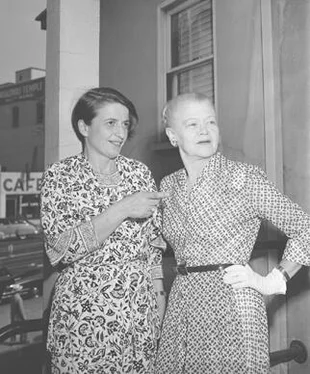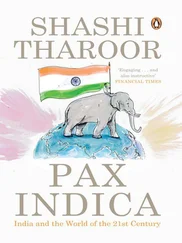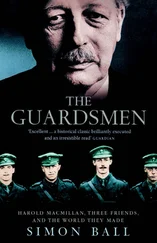Anne Heller - Ayn Rand and the World She Made
Здесь есть возможность читать онлайн «Anne Heller - Ayn Rand and the World She Made» весь текст электронной книги совершенно бесплатно (целиком полную версию без сокращений). В некоторых случаях можно слушать аудио, скачать через торрент в формате fb2 и присутствует краткое содержание. Жанр: Биографии и Мемуары, на английском языке. Описание произведения, (предисловие) а так же отзывы посетителей доступны на портале библиотеки ЛибКат.
- Название:Ayn Rand and the World She Made
- Автор:
- Жанр:
- Год:неизвестен
- ISBN:нет данных
- Рейтинг книги:5 / 5. Голосов: 1
-
Избранное:Добавить в избранное
- Отзывы:
-
Ваша оценка:
- 100
- 1
- 2
- 3
- 4
- 5
Ayn Rand and the World She Made: краткое содержание, описание и аннотация
Предлагаем к чтению аннотацию, описание, краткое содержание или предисловие (зависит от того, что написал сам автор книги «Ayn Rand and the World She Made»). Если вы не нашли необходимую информацию о книге — напишите в комментариях, мы постараемся отыскать её.
Ayn Rand and the World She Made — читать онлайн бесплатно полную книгу (весь текст) целиком
Ниже представлен текст книги, разбитый по страницам. Система сохранения места последней прочитанной страницы, позволяет с удобством читать онлайн бесплатно книгу «Ayn Rand and the World She Made», без необходимости каждый раз заново искать на чём Вы остановились. Поставьте закладку, и сможете в любой момент перейти на страницу, на которой закончили чтение.
Интервал:
Закладка:
It was in this volatile and often frightening atmosphere that Rand grew up. She was the eldest of three daughters of this upwardly mobile pharmacist and his religiously observant, socially ambitious wife; Anna would later appear in her daughter’s novels as a series of superficial or spiteful characters. When Rand was two and a half, her sister Natasha was born; when she was five, her youngest and favorite sister, Eleanora, called Nora, entered the family.
By the time Nora was born, in 1910, Zinovy had advanced to become the manager of a larger, more centrally located pharmacy. The Zabalkanskii drugstore, along with one a few streets away, in which the young chemist had worked before his marriage, were owned by Anna Rosenbaum’s sister Dobrulia Kaplan and her husband, Iezekiil Konheim; the new store, called Aleksandrovskaia, belonged to an affluent and professionally distinguished German Lutheran merchant named Aleksandr Klinge. Klinge’s shop faced Znamenskaya Square on the Nevsky Prospekt, the city’s resplendent main thoroughfare, built extra wide by Peter the Great to accommodate his cavalry and cannons against the insurrections of the eighteenth century. Zinovy, now newly established among the Jewish bourgeoisie, moved his wife and daughters into a large, comfortable apartment on the second floor, adjoining the pharmacy. Another one of Anna’s sisters and her husband, a prosperous medical doctor named Isaac Guzarchik, settled with their two daughters on the floor above. There the family lived until they fled the starving city for the Crimea in the wake of the October 1917 Revolution.
Intelligent, self-directed, and solitary from an early age, Rand must have been a difficult child to raise in the first decade of the twentieth century. In spite of the era’s violence and turmoil, the ambience was Victorian: the fashions were for frills, family loyalty, and the feminine arts, all of which went utterly against her grain. Some of her earliest memories were of being unreasonably treated in such matters by her mother, who was the dominating personality in the household and even at times “a tyrant.” In one memory, during the family’s move to the Nevsky Prospekt apartment, Rand and her younger sisters were sent to stay with a neighboring aunt and uncle, perhaps the Konheims. When they returned to Rand’s new home, she asked her mother for a midi blouse like the ones she’d seen her cousins wearing. Anna Rosenbaum refused. She didn’t approve of midi blouses or other fashionable garments for children, Rand recalled fifty years later. Anna was serving tea at the time, and—perhaps as an experiment—Rand asked for a cup of tea. Again her mother refused; children didn’t drink tea. Rand refrained from arguing, although even then the budding logician might have won the argument on points. Instead, she asked herself, Why won’t they let me have what I want? and made a resolution: Someday I will have it. She was four and a half or five years old, although all her life she thought that she had been three. The elaborate and controversial philosophical system she went on to create in her forties and fifties was, at its heart, an answer to this question and a memorialization of this project. Its most famous expression was a phrase that became the title of her second nonfiction book, The Virtue of Selfishness , in 1962.
Rand’s first memory is worth describing here. The future author of Atlas Shrugged , a novel whose pulse is set by the rhythms of a great American railroad, recalled sitting at a window by her father’s side, aged two and a half, gazing at Russia’s first electric streetcars lighting the boulevard below. Her father was explaining the way the streetcars worked, she told a friend in 1960, and she was pleased that she could understand his explanation. Although she did not know it then, the American company Westinghouse had built the streetcar line, in a gesture to the city’s workers from the embattled czar. Such seeming coincidences—this one suggesting that even as a young child she showed an affinity for the bright beacon of American capitalism—abound in Rand’s life, and later became the threads from which she and her followers would spin her legend.
While the czar’s regime grew more unpopular, and the Marxist Mensheviks and Bolsheviks competed for the allegiance of the nation’s workers, the Rosenbaums prospered. In 1912, Rand’s father became the co-owner of Klinge’s pharmacy, a thriving business that employed not only Klinge and Zinovy, but also six assistant pharmacists, three apprentices, and a number of clerks. In 1914, at the outbreak of World War I, Klinge transferred full ownership of the drugstore to Zinovy, presumably because, as the Russian troops advanced against the German army to the west, anyone bearing a German name was even more at risk than a Jew in the streets and government offices of St. Petersburg. As Zinovy’s income grew, he bought the deed to the building that housed both the store and the family apartment. Anna hired a cook, a maid, a nurse for her daughters, and even a Belgian governess to help the three girls improve their French before they entered school, French being the language of the Russian educated classes. The girls also took music and drawing lessons.
Rand respected her father and strongly disliked her mother, whom, oddly, she called by the Russian variant of her patronymic, Borisovna. From the beginning, she and Anna Rosenbaum did not get along. The daughter viewed her mother as capricious, nagging, and a social climber, and she was painfully convinced that Anna disapproved of her. Anna considered her eldest daughter to be “difficult,” Rand recalled. It’s easy to imagine that she was. Although formal photographs from the time show a beautifully dressed, long-haired little girl with an arresting composure and huge, dark, intelligent eyes, her face is square and her features are slightly pudgy; when animated, they assume the stubborn, hawkish look of her adulthood. She had few friends and little inclination to make new ones, and she was physically inert in an era of passionate belief in physical exercise. Her mother nagged at her to be nicer to her cousins and more outgoing and athletic (“Make motions, Alice, make motions!” Anna would cry)* and was exasperated by her penchant for becoming violently enthusiastic about the things she liked—certain European children’s stories and songs, for example—and immovably indifferent, even hostile, to the things she didn’t. But Anna also articulated many of the values that Rand would later become famous for expressing. In a letter from the 1930s, for example, Anna wrote to Rand, “Every man is an architect of his own fortune” and “Every person is the maker of his own happiness.” Anna liked the idea of America and wanted to visit; she even named the family cats after American states and cities.
Anna came from a more privileged background than Zinovy did. She seems to have been born and raised in St. Petersburg, which was a marked advantage in the late nineteenth and early twentieth centuries, and this gave her an air of sophistication and social polish that her husband lacked. Anna’s father, Rand’s maternal grandfather, was a prosperous St. Petersburg tailor named Berko (or Boris) Itskovitch Kaplan who owned a factory that made military uniforms for the czar’s guards, an occupation that would have afforded the family some protection in times of trouble. Anna’s mother, Rand’s grandmother, named Rozalia Pavlovna Kaplan, was a pharmacist, just as Zinovy and Anna’s sister Dobrulia’s husband were. All lived within a few streets of one another, including the Konheims, the Guzarchiks, and two of Anna’s brothers, Josel and Moisha, called Mikhail. Since many members of Anna’s extended family also lived nearby, and at least a few of Zinovy’s eight brothers and sisters eventually joined him in St. Petersburg, Rand grew up surrounded by a sizable Jewish clan.
Читать дальшеИнтервал:
Закладка:
Похожие книги на «Ayn Rand and the World She Made»
Представляем Вашему вниманию похожие книги на «Ayn Rand and the World She Made» списком для выбора. Мы отобрали схожую по названию и смыслу литературу в надежде предоставить читателям больше вариантов отыскать новые, интересные, ещё непрочитанные произведения.
Обсуждение, отзывы о книге «Ayn Rand and the World She Made» и просто собственные мнения читателей. Оставьте ваши комментарии, напишите, что Вы думаете о произведении, его смысле или главных героях. Укажите что конкретно понравилось, а что нет, и почему Вы так считаете.












